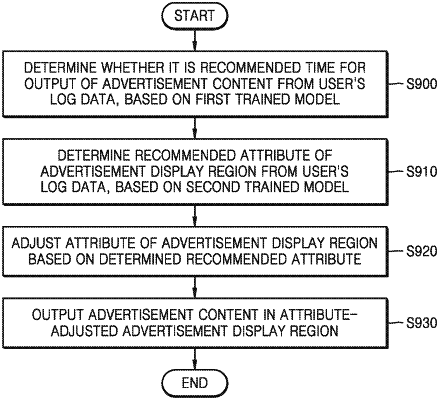| CPC H04N 21/812 (2013.01) [G06N 3/02 (2013.01); G06Q 30/0255 (2013.01); G06Q 30/0264 (2013.01); G06Q 30/0271 (2013.01); H04N 21/4316 (2013.01)] | 20 Claims |

|
1. An image display device, comprising:
a display;
a memory storing one or more instructions; and
at least one processor configured to execute the one or more instructions to:
determine whether a first time while video content is being output through the display is a recommended time for outputting advertisement content, from viewing history information of a user, using a first trained model, wherein the viewing history information of the user comprises information about a channel frequently viewed by the user and a program frequently viewed by the user; and
based on a determination that the first time is the recommended time for outputting the advertisement content, control the display to output the advertisement content in the display,
wherein the first trained model is generated based on learning results of a correlation between the viewing history information of the user and the recommended time for outputting the advertisement content using one or more neural networks,
wherein the recommended time for outputting the advertisement content is determined according to a concentration of the user on the video content that is being output through the display, and
wherein the concentration of the user on the video content that is being output through the display is determined based on information about the video content, the information about the channel frequently viewed by the user and the program frequently viewed by the user, and a user input generating at least one of a channel zapping event, an electronic program guide (EPG) search event, an application search event, and an application execution event.
|